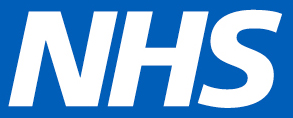As the end of the financial year is finally within reach, all eyes are on the prize of efficiency – both operational and financial. But whilst budgets and finance come under the annual spotlight, we forget at our peril other areas where efficiency is crucial. One of those areas is communications.
The information age means we are bombarded with facts and figures, words and images, ideas and arguments, at every turn, tap or glance. Finding creative, compelling ways to cut through the noise, and to reach the right people with the right message has never been more important.
That has been at the heart of two recent campaigns developed and delivered by SCW’s communications and engagement specialists working in partnership with two ICB teams. Our work to help promote Buckinghamshire, Oxfordshire and Berkshire West ICB’s innovative, new Personalised Care training for healthcare professionals across the area, outlined in more detail here, has helped to drive up the number of people being trained and therefore help ensure more patients are directly involved in decisions and discussions about their care.
Clear, efficient and concise communication was key to the campaign’s success, along with detailed research to identify existing communication channels and approaches – to find and engage hard-pressed, time-poor colleagues in the places they are already go for professional development advice and content.
Clarity and efficiency were also paramount in our recent work to promote and support the delivery of Anticipatory Care in Bath and North East Somerset (BaNES), Swindon and Wiltshire.
This involved sifting through the digital mountain of advice, approaches and procedures to boil it all down to clear, concise, practical and engaging content for primary care professionals. Thorough research and discussions with the target audience revealed a clear understanding of the benefits of Anticipatory Care, and an enthusiasm to deliver it, but the major barrier was knowing where to start and how to find the right, practical information.
We took the pressure off the clinical and programme leads by reviewing, checking, and digitally ‘rubber stamping’ useful and relevant content, drawing it all together to deliver an eye-catching, succinct and easy to navigate online toolkit, and a multi-channel communications campaign to promote it.
Then the design cavalry ride into town. After weeks of work to clearly define, refine and test key messages and content, it’s when the visuals are developed, that we see faces light up. This is always one of my favourite moments in campaign planning, when the puzzle forms, tied together by compelling, dynamic images. In both cases, SCW’s talented, in-house design team created bespoke visual identities to encapsulate the vision and ambition of the programmes and speak directly to the target audiences.
Having efficiency and effectiveness firmly in mind, evaluation is also a crucial and continuous process. With clearly established objectives and baselines from the outset, we capture audience data to ascertain who and how many people we are reaching, what level of engagement we are achieving and most importantly what change that communication is delivering.
BSW’s Anticipatory Care toolkit was shared with 5,800 primary care and NHS professionals in BaNES Swindon and Wiltshire. Whilst the Personalised Care communications campaign reached 27,500 healthcare professionals across Buckinghamshire, Oxfordshire and Berkshire West and saw more than 150 people take up training. The campaign also captured the attention of NHS England, recognising and sharing the ICB’s innovative and dedicated approach to delivering personalised care across the system.
In the interests of communications efficiency … that’s a wrap.
For more information on our communications work, contact









